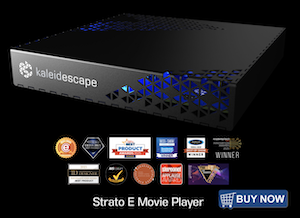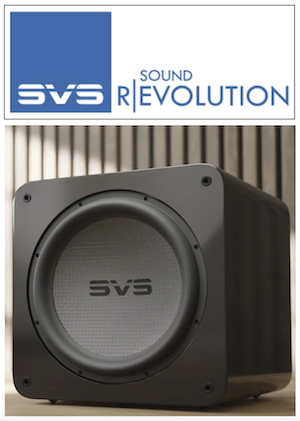CES 2019: Monoprice Unveils Its HTP-1 16-Channel Processor with Dirac and New Sealed Subs
(Monoprice) The all-new HTP-1 Processor will ship this coming fall.(January 3, 2019) There’s always one or two bombshell CES reveals that rock the home theater world, and this year Monoprice is taking the controls and striking first. Just minutes ago, the company officially raised the curtain on two new Monolith product classes that have been kept under tight wraps.
First up, we have the all-new Monolith HTP-1 Home Theater Processor. Aggressively priced at $3,999, the HTP-1 delivers a whopping 16-channels of processing backed by support for both Dolby Atmos and DTS:X immersive sound (along with Dolby and DTS upmixing alternatives). That means enthusiasts can utilize a variety of speaker arrangements, including max deployments of 9.1.6, 7.3.6, and 7.5.4 for Dolby Atmos, and 7.1.4 or 7.5.4 for DTS:X.
Connectivity-wise, the rear of the HTP-1 presents seven upgradable HDMI 2.0b input modules loaded with compatibility for current 4K video technologies, including HDR10+ and Dolby Vision, along with a host of digital and analog input options. It also offers two HDMI 2.0b outputs, with one capable of delivering Enhanced Audio Return Channel (eARC) performance for immersive sound. Other outputs include 16 balanced XLR connectors for primary subwoofer and amplifier connections.
Monoprice says the HTP-1 will ship with a Google Chromecast dongle for access to audio sources such as Spotify, while also internally housing Bluetooth and Roon Endpoint connectivity.
Among a range of “audio enhancements,” such as PEQ, 4thorder Linkwitz-Riley Crossovers, tone controls, and the like, Monoprice has opted to grace the HTP-1 with Dirac Live Room Correction functionality.
This particular processor is currently scheduled to begin shipping sometime during Q3 of 2019. Based on Monoprice’s ability to deliver Monolith products on time, this date should hold true.
Monoprice is also unveiling three new THX Certified sealed subwoofers. The all new 10”, 12”, and 15” models have the same amps, two-layer long fiber pulp/glassfiber drivers, and HDF cabinet construction found on its popular THX Certified ported Monolith models. And, once again, the subs are finished in a Black Ash vinyl covering, featuring two RCA inputs and XLR input/outputs. I’ve had an early peek at preliminary frequency responses for the three new models and the low-end looks like it should hit hard and deep, with bass performance down to 20Hz and below. This is great news for enthusiasts looking for high-end performance from affordable sealed designs.
Monoprice has not released official weights for any of the three models.
Pricing and model designations are as follows:
- M10-S 10” THX Certified Sealed 500 Watt Powered Subwoofer: $499.99
- M12-S 12” THX Certified Sealed 500 Watt Powered Subwoofer: $799.99
- M15-S 15” THX Ultra Certified Sealed 1000 Watt Powered Subwoofer: $1,299.99
All three subs are expected to begin shipping sometime during February or March of 2019.
(Monoprice) The new M10-S 10" Monolith Subwoofer*Editor's Note: AV NIRVANA has confirmed that the HTP-1 will ship with Auro-3D onboard!
Last edited:











